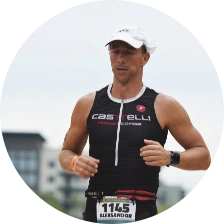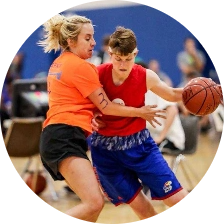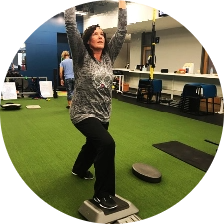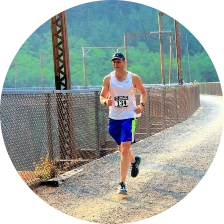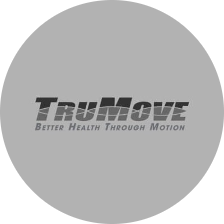Services
Effective and Lasting Biceps Tendonitis Treatment

When the tendon in the upper biceps, also called the long head of the biceps tendon, becomes inflamed or irritated, the patient may be suffering from what is known as biceps tendonitis.
This condition affects the strong and cord-like tendon that serves as the link between the bicep muscle and the bones in the shoulder.
Patients usually present with pain as well as weakness in the front area of the shoulder. These symptoms can be addressed with biceps tendonitis therapy.
It is also not uncommon to see other shoulder problems when a person experiences biceps tendonitis. These problems include the following:
- Arthritis in the joint of the shoulder
- Tears in the shoulder socket or glenoid
- Dislocation of the shoulder
- Shoulder impingement
- Diseases that may cause inflammation in the shoulder joint
Why You Suffer
Age and overuse are the two most common causes of biceps tendonitis.
With years of use, tendons get progressively weaker and may be subject to tears. Overuse can significantly exacerbate this weakness and increase the likelihood of developing biceps tendonitis, especially when the same shoulder motions are repeated over and over.
A lot of jobs and activities also cause weakness in the shoulder joint. In sports, repetitive overhead motions can heighten the risk of developing biceps tendonitis over time. These motions include activities associated with tennis, baseball, swimming, and several others.
Such repetitive overhead motions not only increase the chances of an inflamed shoulder joint, they can also cause rotator cuff tears, chronic shoulder instability, and osteoarthritis.
The following symptoms are most commonly associated with biceps tendonitis:
- Pain or discomfort along the entire arm bone
- Occasional snapping sensations or sounds coming from the shoulder area
- Tenderness or pain in the area in front of the shoulder that gets noticeably worse when the individual does overhead lifting or motions
Traditional Treatments for Biceps Tendonitis
Depending on the extent of the damage to the patient’s tendon, doctors can recommend both non-surgical and surgical treatment options including the following:
Non-surgical
- Rest – Doctors may advise patients to first limit or completely avoid activities that cause pain.
- Nonsteroidal anti-inflammatory medicines – Over-the-counter drugs like ibuprofen or naproxen are recommended to alleviate swelling and pain.
- Steroid injections – Cortisone injections are usually recommended by doctors as powerful anti-inflammatory treatment.
Surgical
- Repair surgery – In rare cases, the area where the biceps tendon attaches to the glenoid or shoulder socket can be repaired through surgery.
- Biceps tenodesis – This is done by removing the painful part of the biceps tendon and reattaching the remaining tendon to the humerus or upper arm bone.
- Tenotomy – When the damage to the tendon is too severe for the first two surgical options, doctors may recommend releasing the biceps tendon from its attachment to the glenoid completely.
Although this is not as invasive as the other two procedures, it can cause a Popeye bulge in the arm.
TruMove Option
Traditional treatments for biceps tendonitis do not always work. Non-surgical options may alleviate pain for a time but symptoms may recur. Surgical options, on the other hand, are invasive and also do not guarantee lasting relief.
Steroid injections, for example, can cause more weakness to the injured joint. The tenotomy procedure, although not as invasive as the other two surgical options, can cause an unusual or Popeye bulge in the upper arm.
Instead of these uncertain traditional treatments that only aim to relieve pain and other symptoms, we recommend The Superior Method wherein the root cause of the condition is first identified in order to find a lasting solution.
Coined by our own Dr. Andrew Dischinger, the TruMove Method addresses the root cause of the tendonitis to make sure that pain is eliminated and does not recur. We offer the following treatment options:
Dry Needling
Certain trigger points or local contractures in the muscle cause pain. This is common in musculoskeletal presentations. By using monofilament needles to stimulate these points pain is addressed safely and virtually painlessly.
Heat and Cold Therapy
Cold packs are used to reduce inflammation while heat packs are used to facilitate healing in the damaged tissues and relax the muscles. Both also alter circulation in a way that relieves pain. We may recommend one or both of these therapies together.
Deep Muscle Stimulation
Using mechanical vibrations that seep into the muscle tissue, blood flow, tissue regeneration, and lymphatic flow are all improved. They also improve the lactic acid cycle, which can be a common cause of pain.






